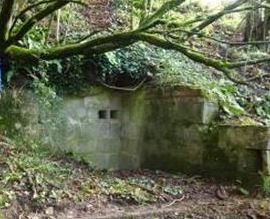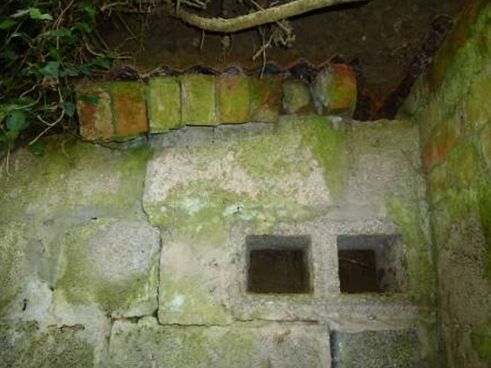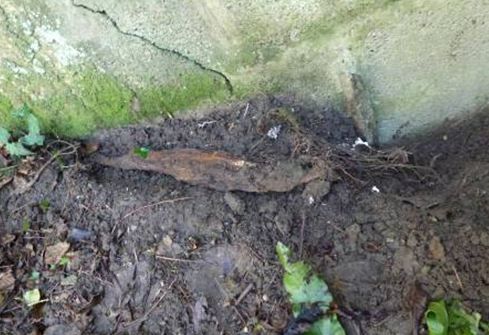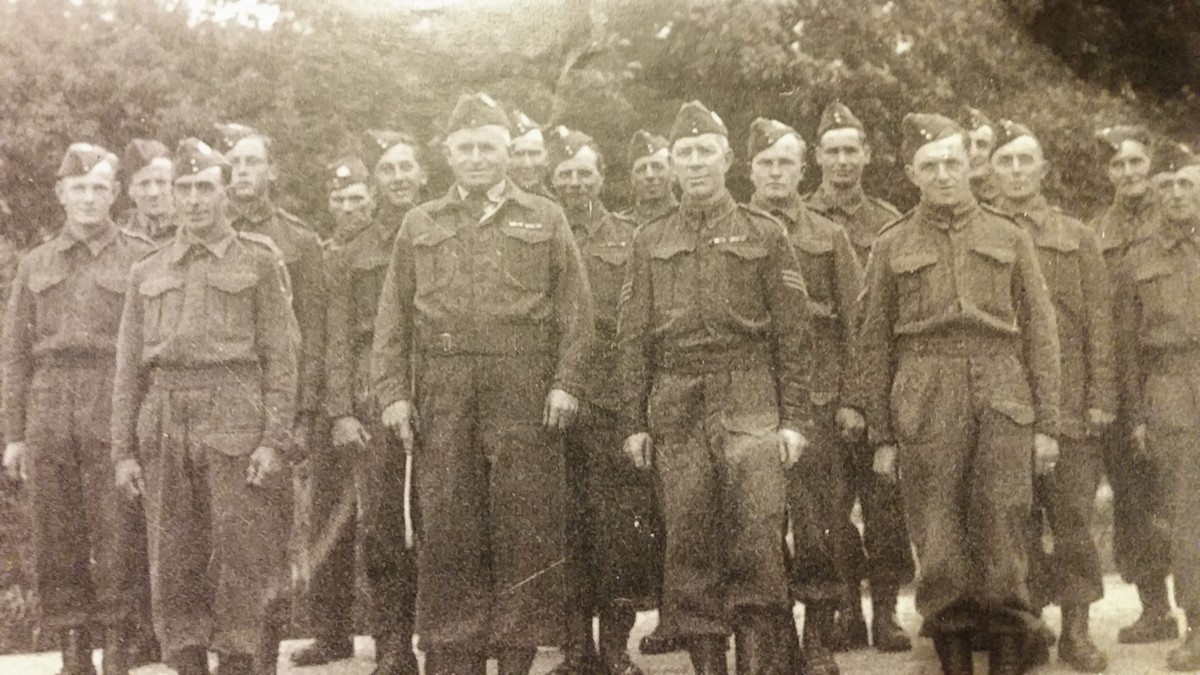Long Bredy is a village 7 miles west of Dorchester just south of the A35 main road.
| Name | Occupation | Posted from | Until |
|---|---|---|---|
| Sergeant Robert James Foot | Dairy & Arable farmer |
01 Jun 1940 | 03 Dec 1944 |
| Corporal Leslie Frank Sorrell | Father is Farmer |
01 Jun 1940 | 03 Dec 1944 |
| Private Roland Horace Fry | Cowman |
Unknown | 03 Dec 1944 |
| Private Richard Legg | Assistant Cowman |
Unknown | 03 Dec 1944 |
| Private Charles Henry Burt Pitcher | Farm Carter |
27 Apr 1942 | 03 Dec 1944 |
| Private William Salisbury | 1939 at School |
08 Oct 1941 | 03 Dec 1944 |
| Private Benjamin Nathaniel Snaydon | General farm worker |
12 Dec 1940 | 03 Dec 1944 |
Access to the OB was arranged by Mr Robin Pitcher through the landowner, Mr Robert Maltby. A field visit was made on 10th Nov 2012. The OB is on private land.
Condition of OB: mostly collapsed
Size of OB and entrance/exit etc: minimum 18ft 2in x 7ft 2in
Other physical remains nearby: Some debris from collapse of the OB can be found further down the slope.
The Patrol had two OBs. The first was built by the Patrol itself in woods north of Little Bredy. Bill Salisbury recalls that Roly Fry and Dick Legg helped with this work, which may mean that they were Patrol members at the time, though they do not appear in the nominal rolls. Bill recalls they carried away the chalk in coal sacks and dumped it in a ditch several miles away. When they got home they were covered in white chalk dust, but their families never asked why. This OB had to be abandoned when the American Forces moved into the area and set up a large camp in the woods.
The second OB was built by regular troops brought in by their Group Commander. It was built in a sand quarry just north of Long Bredy. This quarry had supplied greensand to the Lott and Walne foundry in Dorchester, where it was used for making the moulds for their castings. The OB was built high in the side of the quarry and was a different design from that usually seen. While it was constructed using hollow concrete blocks, as commonly seen in OBs, it had a lean-to style of corrugated iron roof, rather than a full curved Nissen hut shape. This allowed it to be a narrower OB than normal and presumably fit onto the face of the quarry. The greensand would have ensured excellent drainage preventing the OB from getting damp. Bill Salisbury recalls that this bunker was produced in a bit of a hurry. The Army dug it out and when it was finished blew greensand down over it by using explosives. Bill does not ever recall visiting this bunker. “Bob Foot, our Sgt never took us there”.
The OB was sealed at the end of the war, but sometime after, the quarry was worked by machine and one of the diggers knocked a hole through the side of the OB. Albert Pitcher, son of Patrol member Charlie, remembers the bunker in this state as a schoolboy. This has caused the OB to subsequently collapse to its current state.
During the war, the immediate area was much more heavily wooded than is the case now, This would have provided cover for accessing the OB, most probably from one of the footpaths that cross the hill into which the quarry had been cut.
Long Bredy Patrol
The Patrols in this area are spread along the sides of the A35, the main East-West route through Dorset, suggesting that this was a major target. It is also likely that large houses taken over by the Germans would also have formed targets. There were fewer obviously military targets in this rural part of Dorset.
The Patrol received the usual training in explosives. Charlie Pitcher recounted to his family how he had learnt to fell trees across the road to block them. He never mentioned going to Coleshill or Duntish Court.
In common with a good number of Auxiliers in other parts of the country, the Long Bredy Patrol were approached to see if they would be willing to be dropped behind enemy lines in France and carry out their sabotage activities there. They were later told that they were too valuable in their reserved occupations for this to have been progressed. It may be that there was confusion around the approach by the SAS to Auxiliary Units to recruit men for its expanding regiment.
National Archives WO 199/3390, 199/3391, 1911 Census, Interviews by John Pidgeon with Patrol members Les Sorrell and Bill Salisbury, Additional information from Albert Pitcher, son of Patrol member Charlie, and Albert’s son Robin Pitcher.



